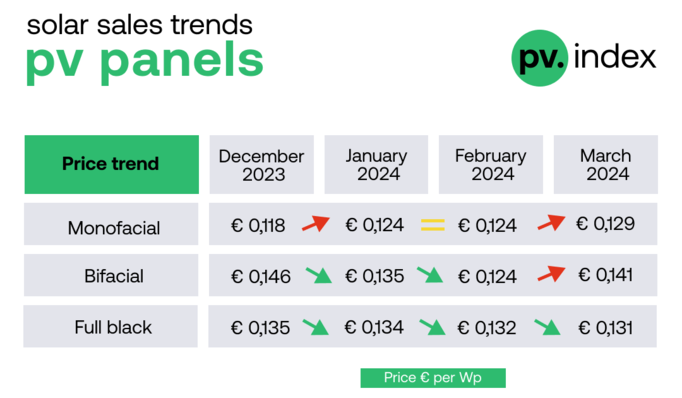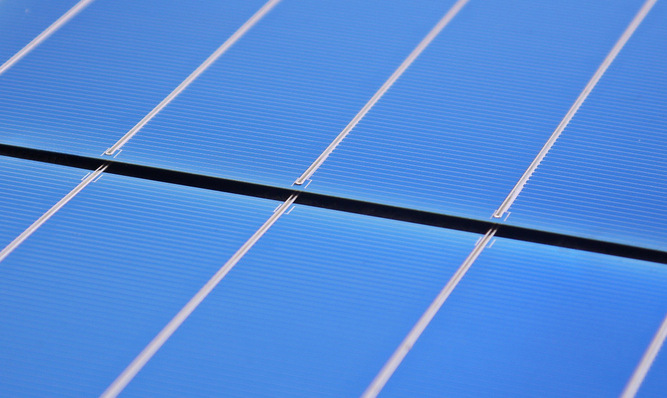The floating solar park Sekdoorn near Zwolle hardly catches the eye from a distance. The photovoltaic modules can only be seen on the water surface near the banks of the several-hectare sand extraction lakes. They are mounted on floating bodies with a patented triangular substructure. The 14.5 megawatt plant with a total of 39,544 solar modules is expected to deliver 13,330 megawatt hours per year when it is fully completed within one and a half weeks. It will be built by BayWa r.e.. The Munich-based company is active in the Netherlands through Groenleven.
But there is still a lot going on at the assembly site for the "solar boats", on each of which 12 GCL glass/glass solar modules with an output of 370 to 385 watts are mounted. In no time at all, trained construction teams assemble and assemble the pre-configured components and then push them into the water via a ramp. Then they are towed by inflatable motor boats to the other "solar boats" in rows and then docked in blocks to the complete park. Between the blocks there are walk-in floating inverter streets with Huawei string inverters and 10 kV transformers and monitoring unit at the end. The plant's high-voltage current is then fed to a designated transformer station on the shore via bundled cables protected by floating protective pipes. There are several earthing systems.

High degree of preconfiguration and easy accessibility decisive
Over 60 cables attached to the shore stabilize the floating park. "If the wind is right here, the waves can be up to one meter high," says Edgar Gimbel, Technical Director at BayWa r.e. To protect the solar park from this, breakwaters made of steel pipes are installed on the open lakefront. Even on a day like today, it is already blowing quite strongly, but the working paths between the rows of solar modules and inverters move only imperceptibly and can be walked on normally. "Easy access to the system is very important in order to be able to maintain it easily and safely if necessary," emphasizes Gimbel. In addition, a high degree of prefabrication and modular design, as well as the simplest and safest electrical cabling possible, are decisive for the quickest and easiest possible installation of the park.
BayWa r.e. also attached great importance to the protection of water ecology: "The solar modules have a sufficient distance to the water surface to ensure water exchange and prevent eutrophication. In addition, ducks and other water birds can swim underneath. The substructure was developed in cooperation with the German PV steel construction company Zimmermann.

Additional costs - but higher yield and dual use
What about costs and earnings: "The additional costs compared to PV open space systems on land are currently still around 20 to 25 percent," says Benedikt Ortmann, responsible for the solar project business at BayWa r.e.. However, he is confident that further optimisation will reduce these to around 10 percent in the foreseeable future and that in the medium term floating solar parks will hardly be more expensive than on land. The floating solar systems benefit from a yield several percentage points higher due to the cooling effect of the water for the modules at higher temperatures. Also dual use is possible: In Sekdoorn, for example, the front part of the excavator lake is used for solar power generation, while sand mining is still in progress in the rear part.
In any case, BayWa r.e. is making steam when it comes to floating solar parks: construction of the largest floating plant to date with 27.4 MW is due to start in the Netherlands within the next days. The aim is to operate floating PV systems with an output of 100 to 150 MW in the Netherlands by the summer of next year. As in Sekdoorn, this is to be financed through participation in tenders within the framework of the SDE+ programme.

Potential in Germany 10 to 15 GW on former mining lakes
"In Germany, too, we have initial contacts with sea owners, an energy supplier and a project developer," says Ortmann. However, under the current tender design, floating PV systems with an output of more than 750 kW are not yet competitive in Germany. But this could change with further cost reductions or the introduction of innovation tenders. In any case, Ortmann also sees good opportunities in Germany. Fraunhofer ISE recently quantified a potential of for floating PV on decommissioned coal mining lakes in Germany of 10 to 15 gigawatts. (HCN)







